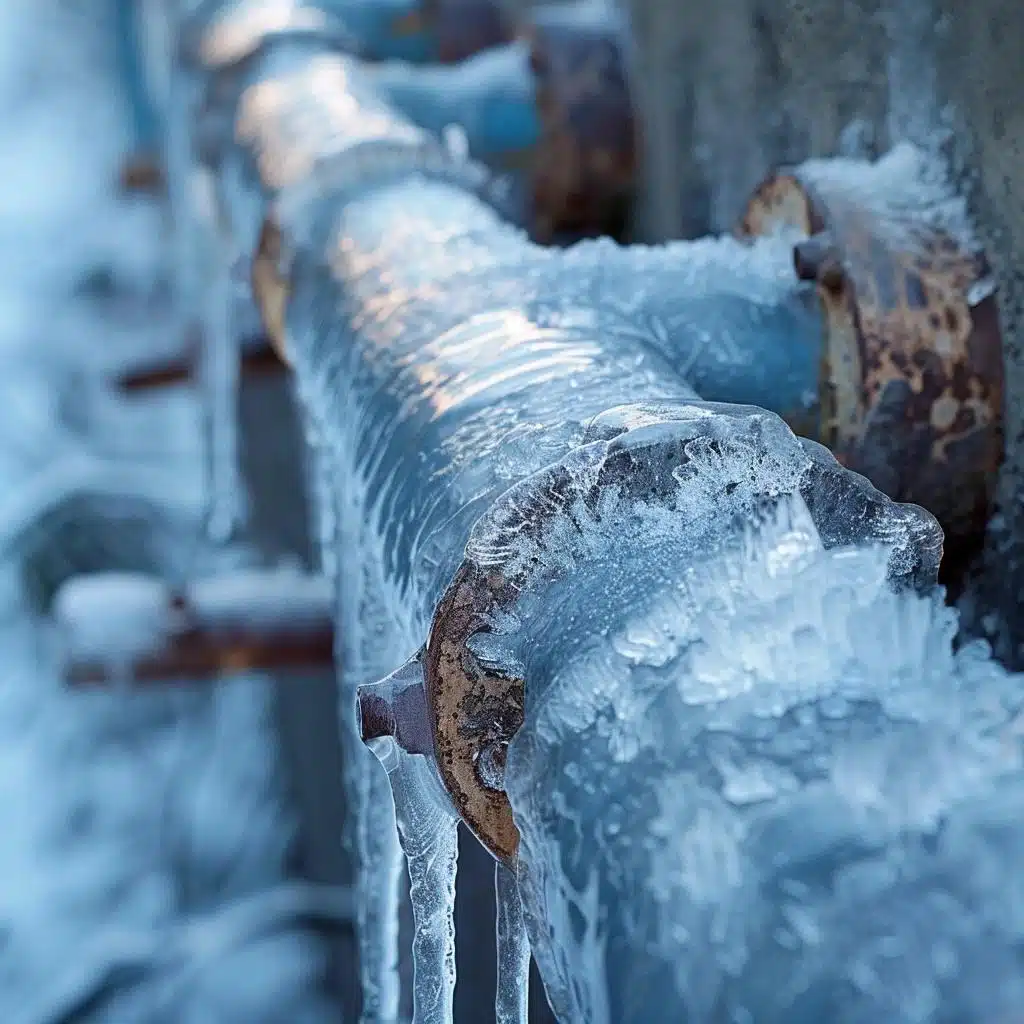Avoiding Frozen Plumbing in Winter: Professional Advice
Avoiding Frozen Plumbing in Winter: Professional Advice
Blog Article
We've stumbled on this post relating to How to prepare your home plumbing for winter weather listed below on the net and felt it made good sense to talk about it with you in this article.

Cold weather can ruin your pipes, especially by freezing pipes. Here's how to stop it from occurring and what to do if it does.
Introduction
As temperatures decline, the danger of icy pipelines rises, possibly causing expensive repairs and water damages. Understanding just how to avoid icy pipes is crucial for house owners in cold environments.
Prevention Tips
Protecting at risk pipes
Cover pipelines in insulation sleeves or use warm tape to protect them from freezing temperatures. Concentrate on pipelines in unheated or exterior areas of the home.
Home heating strategies
Keep interior areas appropriately heated, particularly locations with pipes. Open up closet doors to permit cozy air to circulate around pipes under sinks.
How to identify frozen pipes
Search for decreased water flow from taps, unusual smells or sounds from pipelines, and visible frost on revealed pipelines.
Long-Term Solutions
Structural changes
Think about rerouting pipelines far from outside wall surfaces or unheated areas. Include extra insulation to attic rooms, cellars, and crawl spaces.
Updating insulation
Invest in top notch insulation for pipes, attic rooms, and wall surfaces. Correct insulation helps preserve consistent temperature levels and minimizes the threat of frozen pipelines.
Securing Exterior Pipes
Yard hose pipes and exterior taps
Separate and drain garden hose pipes before winter. Mount frost-proof faucets or cover outdoor taps with protected caps.
Understanding Icy Pipes
What causes pipelines to freeze?
Pipelines freeze when subjected to temperature levels listed below 32 ° F (0 ° C) for expanded durations. As water inside the pipelines ices up, it increases, putting pressure on the pipeline walls and possibly triggering them to break.
Dangers and damages
Icy pipes can cause supply of water disturbances, property damage, and costly fixings. Ruptured pipelines can flooding homes and trigger considerable structural damage.
Indications of Frozen Piping
Recognizing frozen pipes early can prevent them from bursting.
What to Do If Your Pipes Freeze
Immediate actions to take
If you think frozen pipes, keep taps open up to eliminate pressure as the ice melts. Use a hairdryer or towels taken in warm water to thaw pipelines gradually.
Final thought
Preventing frozen pipelines calls for proactive measures and quick actions. By recognizing the reasons, signs, and safety nets, homeowners can shield their plumbing throughout cold weather.
6 Proven Ways to Prevent Frozen Pipes and Protect Your Home
Disconnect and Drain Garden Hoses
Before winter arrives, start by disconnecting your garden hoses and draining any remaining water. Close the shut-off valves that supply outdoor hose bibs and leave the outdoor faucet open to allow any residual water to drain. For extra protection, consider using faucet covers throughout the colder months. It’s also important to drain water from any sprinkler supply lines following the manufacturer’s directions.
Insulate Exposed Pipes
Insulating your pipes is an effective way to prevent freezing. Pipe insulation is readily available at home improvement stores and is relatively inexpensive. Pay close attention to pipes in unheated areas such as the attic, basement, crawl spaces, or garage. Apply foam insulation generously to create a buffer against the cold. You can also wrap your pipes in heat tape or thermostat-controlled heat cables for added warmth.
Seal Air Leaks
Inspect your home for any cracks or openings that could let in cold air. Seal any holes around the piping in interior or exterior walls, as well as the sill plates where your home rests on its foundation. Additionally, make sure to keep your garage door closed unless you’re entering or exiting. Leaving it open creates a significant air leak that can lead to frozen pipes.
Allow Warm Air Circulation
During cold snaps, it’s essential to allow warm air to circulate evenly throughout your home. Leave interior doors ajar to promote better airflow. Open kitchen and bathroom cabinets to help distribute heat consistently around the rooms. If you have small children or pets, be sure to remove any household chemicals or potentially harmful cleaners from open cabinets for safety.
Let Faucets Drip
A small trickle of water can make a big difference in preventing ice formation inside your pipes. When temperatures drop significantly, start a drip of water from all faucets served by exposed pipes. This continuous flow helps prevent the water from freezing. Additionally, running a few faucets slightly can relieve pressure inside the pipes, reducing the chances of a rupture if the water inside does freeze.
https://choateshvac.com/6-proven-ways-to-prevent-frozen-pipes-and-protect-your-home/

I am very occupied with Preventing and dealing with frozen pipes and I hope you enjoyed my post. Those who enjoyed reading our article plz consider to share it. Thanks so much for taking the time to read it.
Book Your Service Report this page